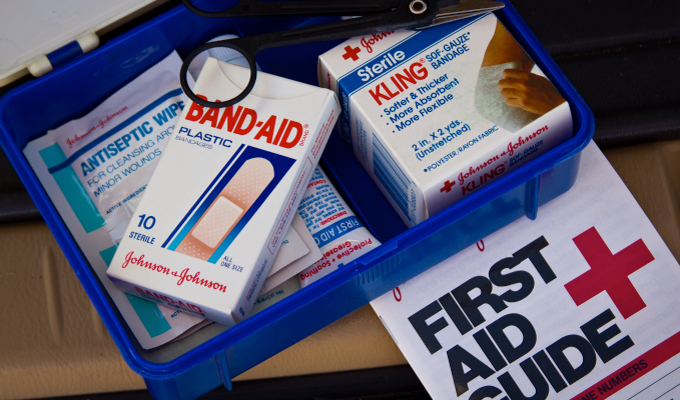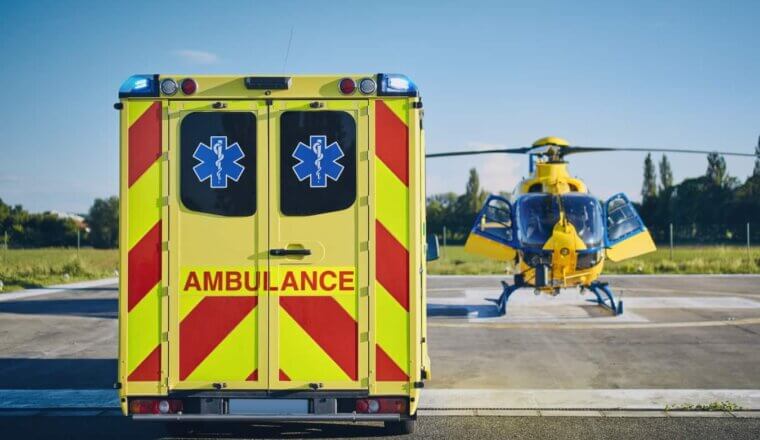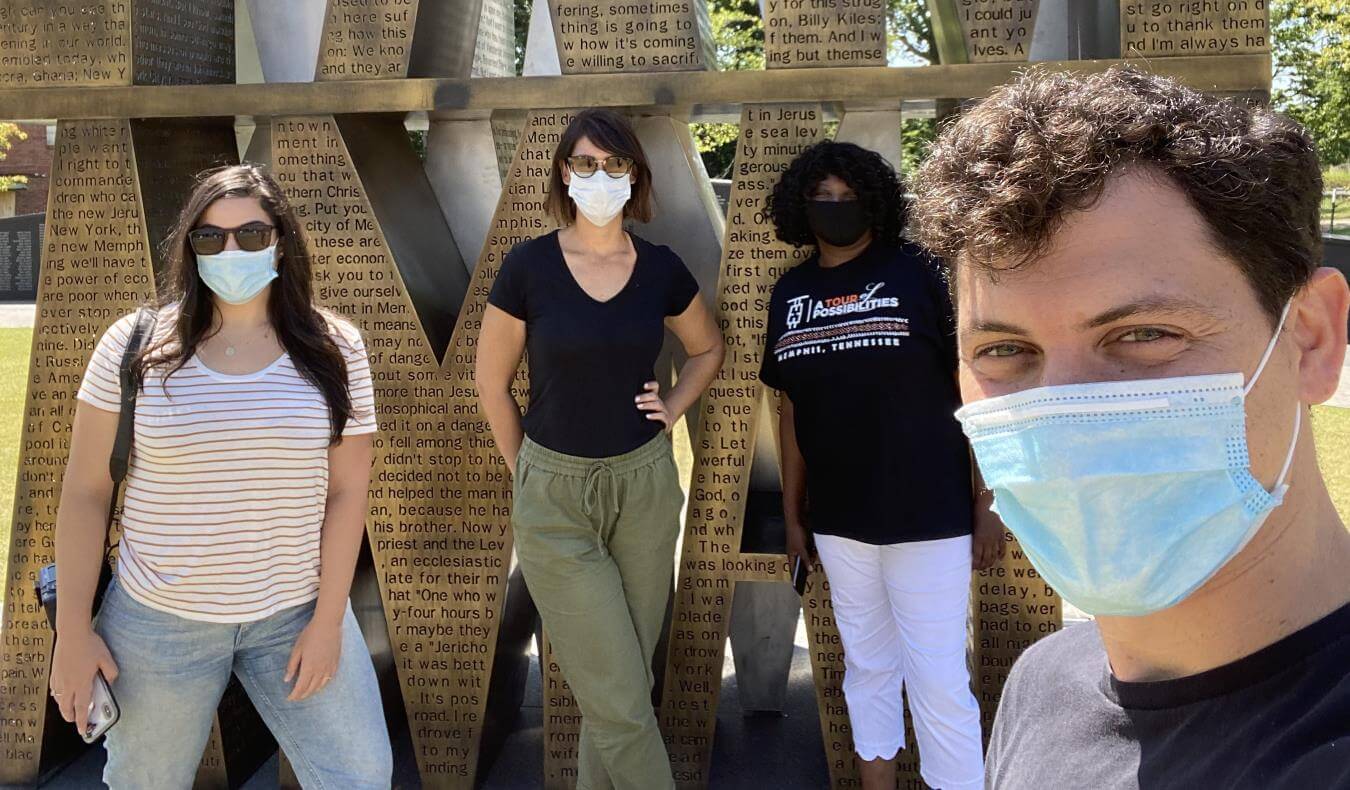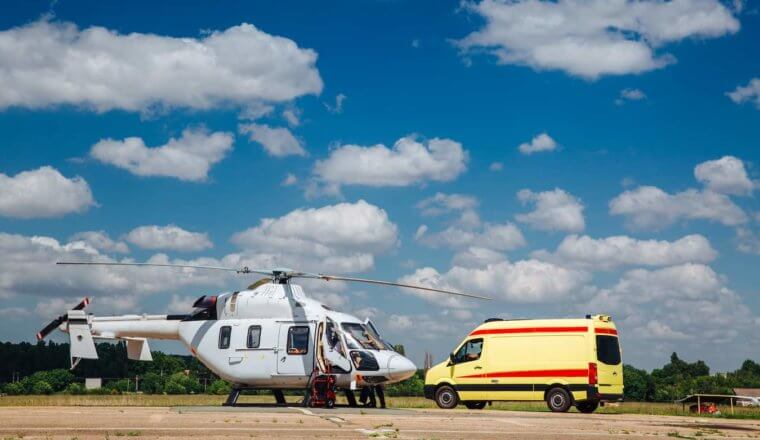How To Pack A Professional Travel First Aid Kit

I get a lot of questions about health care on the road. Since I’m not a doctor, I don’t like giving medical advice beyond a few general tips so I’ve asked Mike Huxley, a registered nurse, to share his expert tips and advice when it comes to packing a first aid kit for your travels.
I have been traveling the world for over fifteen years now, and in that time I have patched up more travelers’ scrapes and sprains than I can remember.
Thankfully, pretty much all of the incidents I have dealt with so far have been minor. Even during my time spent volunteering as an expedition medic in the Sahara, the jungles of Kalimantan and Borneo, and many other amazing places, I have been able to deal with most accidents and injuries that have crossed my path.
I have only been able to do all of this, however, because I have always packed my trusty first aid kit. It has evolved and been refined over the years, but I have always carried one.
As any experienced traveler or health professional will tell you, things can and occasionally do go wrong on any trip, and taking a well-stocked kit with you is always advised.
When I first started traveling, I did what most sensible people do and carried a commercially available emergency first aid kit.
However, over the years, and with a lot of experience and my nursing qualification behind me, I have refined my own kit to reflect what I will use out on the road and what I know will make for a much better first aid kit for the average traveler too.
The best first aid kits are simple but varied and have a variety of dressings and equipment to deal with the basics. More importantly, they can be used with little or no training. So, what items should you include? Here are my picks for the essentials:
1. Band-Aids/Plasters
It goes without saying that these are absolutely essential in any first aid kit. The most common form of minor injury is a cut or a graze, so it is always a good idea to carry a handful of Band-Aids in a variety of sizes.
If you think you will be doing a lot of trekking on your travels and you aren’t used to that form of exercise, then some blister plasters are a good idea.
It isn’t necessary to go overboard and carry so many you could start your own tiny field hospital; just a few of each type will do, as you can always restock when you pass a pharmacy.
2. Gauze
Gauze is the medical jack-of-all-trades. I never carry a first aid kit without a supply of gauze in it, and I can’t tell you how many times it has come in useful over the years. It can be used to apply pressure to a wound, clean an injury, soak up blood, help stop bleeding, and even form part of a basic dressing for small-to-medium wounds.
A clean wound and a layer of gauze kept down with either tape or an adhesive bandage is often enough to allow time for you to go and get it looked at by a professional.
The best type of gauze to carry in a first aid kit is individually wrapped sterile squares. This eliminates the need to cut them to size when you need them quickly and obviously makes it easier to keep the wound clean and sterile.
3. Crepe bandages (ACE or elastic bandages)
For when you have something a bit bigger than a cut, basic crepe bandages are useful for keeping small dressings clean and in place until you can get some medical attention.
Remember, you’re only going to use them in an emergency, until you can get some professional medical care (ideally covered through the travel insurance that you got in advance of your trip). You don’t need too many of these, just one or two at most.
4. Surgical tape
Surgical tape is one of those essential emergency items for when you need to apply and secure gauze or a bandage to a wound, although Band-Aids can do the same job if need be.
5. Small scissors
These come standard in any commercially available first aid kit (although you can buy them separately too) and are obviously useful for trimming gauze or bandages to size. Just be careful if you do carry scissors to ensure that your first aid kit goes in your checked bag when you are in transit or else airline security will take them off you.
If you’re flying carry-on only, small scissors (max 4 inches/10 centimeters) are permitted according to the TSA. If you want to be on the safe side, get ones with rounded tips. Also, remember that you don’t need to bring them from home — most grocery stores or stationery shops have them as well.
6. Tweezers
Tweezers are another item that often comes standard in most first aid kits and can be useful for pulling out splinters, getting out little bits of stone or dirt when cleaning a wound, or any number of other practical uses.
7. Antiseptic wipes
For some reason this tends to be the one thing most people overlook when thinking of first aid, but antiseptic wipes are an absolute essential in any good pack. No one wants a cut or wound to get infected, and antiseptic wipes are perfect for cleaning it before applying a dressing.
Just a small handful will suffice for most packs. Like most basic items, they are easy to replace at any pharmacy when you run low.
8. Condoms
Apart from the obvious benefits (staying sexually safe), these handy little items can be used as emergency water carriers or even filled with ice as an emergency ice pack. I’ve personally never had any call to use them in that manner, but it is a handy bit of information to keep in mind.
9. Pain relief medication
A small pack of basic acetaminophen (also known as paracetamol) or any of the associated brand names (like Tylenol) is usually sufficient, but ibuprofen or other similar medications are fine too. It doesn’t have to be fancy — basically whatever you normally take for pain relief when you have a headache or minor pain.
10. Loperamide tablets
Also known under a variety of brand names such as Imodium, this is useful for stopping diarrhea for short periods when you need to catch a bus or train. Remember, these are for those emergency moments only when you are actually in transit, as they do not cure diarrhea and shouldn’t be used when you can rest up for a couple of days. (Normally the best way to treat diarrhea is to let everything pass through your system normally and drink plenty of water to replace lost fluids.)
If you use them sparingly, properly, and as directed on the pack, loperamide tablets can be useful additions to any travel first aid kit.
11. Antihistamine cream
It happens to all of us on our travels: we get bitten by some form of insect and end up with a painfully itchy bump or rash. Don’t worry, the absolute majority of the time the bumps and stings aren’t anything to worry about at all, but they are damned annoying! This is why a good antihistamine cream is a useful addition to help control itching and swelling.
12. Antibacterial creams
It’s also a good idea to carry antibacterial creams like Neosporin for any cuts and scrapes you get. This will help heal them faster as well as prevent any possible infections.
Obviously, this list can be tailored or added to depending on your trip needs (a tropical jungle trek will require different planning than a city break in Europe). Any good first aid kit should also include any specific, individually prescribed medication or antimalarial prophylaxis.
For the majority of travelers, however, the items and kit listed above will cover the majority of basic incidents and accidents. You’ll also want to make sure you have comprehensive travel insurance as well to protect you against unexpected costs that you might incur should an emergency happen.
For any injury, illness, bang, or scrape that requires more than the basics and cannot be covered by the kit above, you should seek professional medical attention. Unless you are extremely far off the beaten track, you should be able to seek out professional assistance to deal with medical emergencies pretty easily if something happens you can’t handle yourself.
So go pack up your own little first aid kit and keep it stashed in your pack for emergencies. Odds are you will probably never use it — and I hope you never need to — but if you have one, at least you can enjoy your travels with peace of mind and be safe in the knowledge that you are prepared.
Important Note: When carrying any generic medication, it is essential that it is kept in its original packaging when you are traveling in case customs officials need to check it. The information provided here is for general travel health advice and information only. It is provided by a qualified nurse, but it is not a replacement for a personal consultation with a travel nurse specialist, your GP, or a doctor specializing in travel medicine who can tailor advice to your individual medical history and needs.
Book Your Trip: Logistical Tips and Tricks
Book Your Flight
Find a cheap flight by using Skyscanner. It’s my favorite search engine because it searches websites and airlines around the globe so you always know no stone is being left unturned.
Book Your Accommodation
You can book your hostel with Hostelworld. If you want to stay somewhere other than a hostel, use Booking.com as it consistently returns the cheapest rates for guesthouses and hotels.
Don’t Forget Travel Insurance
Travel insurance will protect you against illness, injury, theft, and cancellations. It’s comprehensive protection in case anything goes wrong. I never go on a trip without it as I’ve had to use it many times in the past. My favorite companies that offer the best service and value are:
- SafetyWing (best for everyone)
- InsureMyTrip (for those 70 and over)
- Medjet (for additional evacuation coverage)
Want to Travel for Free?
Travel credit cards allow you to earn points that can be redeemed for free flights and accommodation — all without any extra spending. Check out my guide to picking the right card and my current favorites to get started and see the latest best deals.
Need Help Finding Activities for Your Trip?
Get Your Guide is a huge online marketplace where you can find cool walking tours, fun excursions, skip-the-line tickets, private guides, and more.
Ready to Book Your Trip?
Check out my resource page for the best companies to use when you travel. I list all the ones I use when I travel. They are the best in class and you can’t go wrong using them on your trip.




